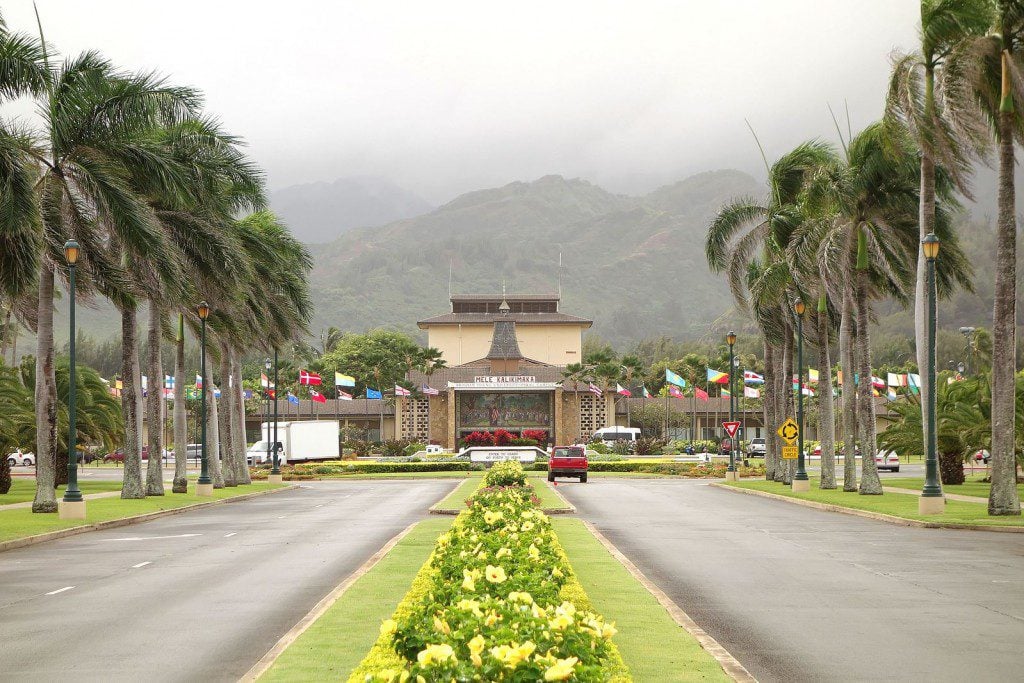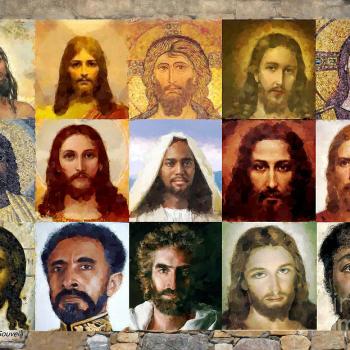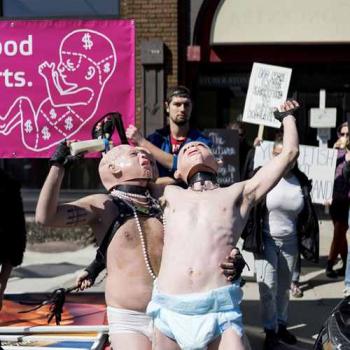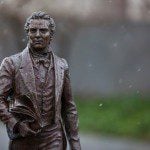
(Wikimedia Commons public domain image)
***
It seems that — between roughly 5 PM and 5:45 PM this evening (Tuesday evening) — I’ll be chairing the “Concluding Roundtable Session” of the Brigham Young University conference on “The Islamic World Today: Issues and Perspectives,” which is watchable online. It should be fun. Monday’s conference sessions were quite interesting. Congratulations to Grant Underwood and those who worked with him for putting together a very solid program.
***
Interesting thoughts, easily transferred to the Restored Gospel and to any of the campuses of Brigham Young University and, at least partially, to Ensign College, and perhaps even to Southern Virginia University — so long, at least, as they remain faithful to the teachings and standards of the Restoration and to the extent that they maintain rigorous curricula:
“On Not Buying Into the Mythology of ‘Prestige’ Universities”
***
This is so terribly unnecessary:
“Why this doctor says Idaho has ‘lost the war’ against COVID-19”
I would call it ridiculous if it were even slightly funny. But it’s not:
“Front-line fatigue: COVID resurgence leaves ICU doctors feeling ‘heavy in the soul’”
Come on, people!
***
I’ve indicated my resolution to try to use this blog in a way that is more helpful to — and less competitive with — my book-writing goals. One of the ways in which I can do this is to employ it as a place for transcribing (and, thus, for sharing) notes from my reading. I have a large number of unfinished manuscripts, and I would like eventually to complete them. So here I go.
I’m still slowly reading Alexander L. Baugh, Steven C. Harper, Brent M. Rogers, and Benjamin C. Pykles, eds., Joseph Smith and His First Vision: Context Place, and Meaning (Provo and Salt Lake City: Religious Studies Center, Brigham Young University, and Deseret Book, 2021). In this blog entry, I share a few notes from Matthew C. Godfrey, “The ‘Nature’ of Revelation: The Influence of the Natural Environment on Joseph Smith’s Revelatory Experiences,” 149-166.
First I’ve gathered a couple of passages about what we might call a simple form of instinctive “natural theology.”
New England’s Calvinist heritage was also steeped in the idea that God could be found in nature. John Calvin pointed to nature as evidence of God’s existence, stating that “all creatures, from those in the firmament to those which are in the center of the earth,” testified that God was real. “The little birds that sing, sing of God; the beasts clamor for him; the elements dread him, the mountains echo him, the fountains and flowing waters cast their glances at him, and the grass and flowers laugh before him,” Calvin declared.
Jonathan Edwards, a renowned Congregationalist preacher in the eighteenth century. To Edwards, the Lord appeared everywhere, “in the sun, moon and stars; in the clouds, and blue sky; in the grass, flowers, trees; in the water, and all nature.” Edwards stated that he “used to sit and view the moon, for a long time; and so in the daytime, spent much time in viewing the clouds and sky, to behold the sweet glory of God in these things.” (152)
[Joseph] Smith — much like Calvin and Edwards — acknowledged that the natural world was instrumental in his feeling comfortable approaching God in prayer. “I looked upon the sun, the glorious luminary of the earth, and also the moon, rolling in their majesty through the heavens,” Smith remembered, and they, together with “the stars shining in their courses,” convinced him that God existed. Equally important was his perception of “the beasts of the field, and the fowls of heaven, and the fish of the waters.” All of these creations, as well as “[humans] walking forth upon the face of the earth in majesty and in the strength of beauty,” testified to Smith that there was “an omnipotent and omnipresent power, a being who maketh laws and decreeth and bindeth all things in their bounds, who filleth eternity, who was and is and will be from all eternity to eternity. (153-154)
I’m also interested in Joseph Smith’s decision to go out into the woods to pray. I’ve already found another example of his propensity to do that, and I’ve already gathered a few specimens that appear to show that it was a fairly common practice. Which, to me, slightly strengthens the plausibility of his story. So I was pleased to read this:
For example, in the late eighteenth century, Benjamin Abbot, on his way to a Methodist meeting, went into the woods to pray to God “for mercy,” while Enoch Edwards, a Baptist, “retired to a grove of woods to pray” because of his “spiritual pain.” Noted preacher Charles Grandison Finney decided in 1821 that the place to “give [his] heart to God” was in a forest. Even Joseph Smith’s mother — Lucy Mack Smith — ventured into the woods for spiritual relief. Sometime in the late 1790s or early 1800s, Lucy, disturbed at her husband’s lack of enthusiasm for organized religion and hurt that he had urged her to stop attending Methodist meetings, went “to a grove of handsome wild cherry trees and prayed to the Lord that he would so influence the heart” of Joseph Smith Sr. that one day he would “rec[ei]ve the Gospel whenever it was preached.” According to Lucy, she spent a considerable amount of time in the grove, pouring her heart out to God. Such an example, if told to her family, would have influenced Joseph Smith to seek his own spiritual enlightenment in a forest.” (152-153)
At this point, Matthew Godfrey, the author of the article, describes Joseph Smith’s First Vision and then moves on:
Influenced by this experience, Smith again found redemption and forgiveness in a grove of trees in Greenville, Indiana, twelve years later. Without experiencing the darkness of his 1820 encounter, he poured out his soul to God and felt again God’s mercy and forgiveness. (155)
***
And, finally, here’s another blood-curdling tale from the Christopher Hitchens Memorial “How Religion Poisons Everything” File©:
“The Church Donates US$2 Million to First Americans Museum in Oklahoma”















